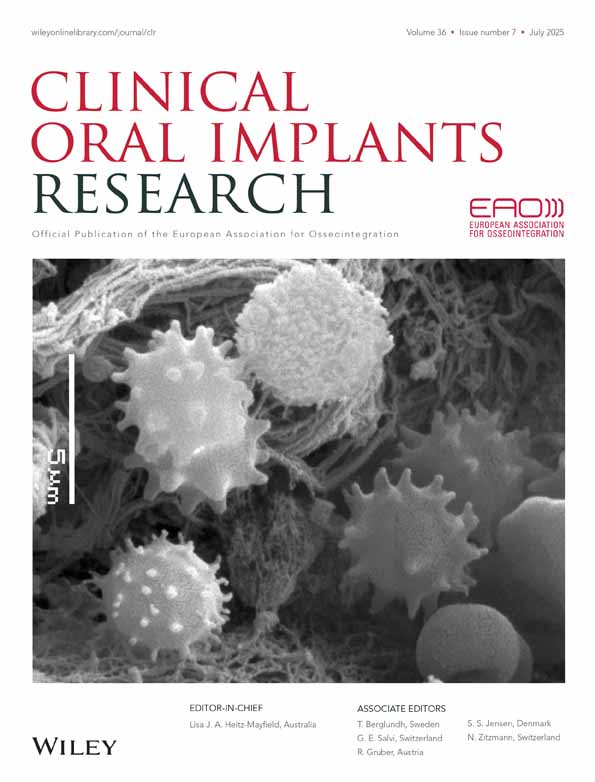Bone reactions adjacent to titanium implants subjected to static load
A study in the dog (I)
Abstract
Abstract: The aim of the study was to evaluate the effect of lateral static load induced by an expansion force on the bone/implant interface and adjacent peri-implant bone. In 3 beagle dogs, the 2nd, 3rd and 4th mandibular premolars were extracted bilaterally. Twelve weeks later 8 implants of the ITI Dental Implant System were placed in each dog. Crowns connected in pairs were screwed on the implants 12 weeks after implant installation. The connected crowns contained an orthodontic expansion screw yielding 4 loading units in each dog. Clinical registrations, standardized radiographs and fluorochrome labeling were carried out during the 24-week loading period. Biopsies were harvested and processed for ground sectioning. The sections were subjected to histological examination. No evident marginal bone loss was observed at either test or control sites. The bone density and the mineralized bone-to-implant contact were higher adjacent to the lateral loaded implants than at the unactivated control sites. It is suggested that the static load applied to implants in a lateral direction resulted in a structural adaptation of the peri-implant bone.




